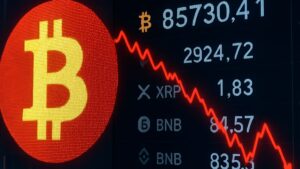TL;DR
- Celestia buys back $62.5M TIA, sparking 4% surge: The foundation repurchased 43.45M tokens from Polychain Capital, reclaiming 2% of supply to counter sell pressure. Tokens will be redistributed under a new vesting schedule starting August 16.
- Response to Polychain’s $240M reward dump: The buyback addresses community outrage over Polychain selling staking rewards while its initial tokens were locked.
- Lotus upgrade ties rewards to vesting: Launching August 16, the mainnet update will partially lock staking rewards based on token vesting status. This prevents instant dumping by whales, safeguards retail, and incentivizes long-term participation.
The Celestia Foundation executed a decisive $62.5 million TIA token repurchase from early backer Polychain Capital, triggering an immediate 4% price surge. Acquiring precisely 43,451,616 TIA tokens at $1.44 each, slightly below market value, this strategic maneuver reclaims control of nearly 2% of the circulating supply.
The foundation will redistribute these tokens under a revised vesting schedule effective August 16, directly countering concerns over concentrated sell pressure. By absorbing this liquidity shock proactively, Celestia aims to stabilize long-term tokenomics while signaling commitment to equitable distribution principles that prioritize sustainable network growth over short-term speculation.
The Celestia Foundation has worked with Polychain Capital to assign Polychain’s entire remaining TIA holdings to new investors.
This month, the Foundation purchased 43,451,616.09 TIA from Polychain Capital for $62.5m. Polychain will shortly be undelegating their entire staked…
— Celestia 🦣 (@celestia) July 24, 2025
Addressing “Unfair” Staking Reward Dumping
This aggressive buyback responds to mounting community fury over Polychain’s controversial actions. Despite its initial investment tokens remaining locked, the venture firm dumped over $240 million in staking rewards, equivalent to 8% of TIA’s recent market cap.
On-chain analysts revealed these sales systematically suppressed price appreciation during critical growth phases, even as user adoption climbed 40% quarterly. Retail stakers condemned the practice as predatory, arguing it drained liquidity while bypassing vesting restrictions meant to align incentives.
The foundation acknowledged these operations “undermined fair reward distribution” and eroded trust in the protocol’s economic design. At the time of writing, TIA maintains its upward momentum, trading at around $1.90, increasing more than 2%.
Lotus Upgrade Enforces Vesting-Linked Rewards

Synchronized with the buyback, Celestia’s Lotus mainnet upgrade (launching August 16) introduces revolutionary staking mechanics. Under the new system, staking rewards will be partially locked based on the vesting status of underlying tokens. For example, if a participant’s tokens are 50% vested, only half their rewards become liquid immediately.
This reform directly targets early investors like Polychain, preventing the instantaneous liquidation of staking yields. Validators and retail participants gain robust protection against whale-driven sell-offs, while the protocol incentivizes genuine long-term engagement through cascading vesting schedules that mature alongside network milestones.
Rebuilding Trust for Sustainable Growth
Celestia’s dual-pronged strategy, token reacquisition plus staking reform, marks a pivotal shift toward self-correcting tokenomics. Trading volume spiked 150% post-announcement, reflecting market approval of these fairness-focused measures. By tethering rewards to vesting timelines, the foundation neutralizes extractive behaviors while creating predictable liquidity conditions.










